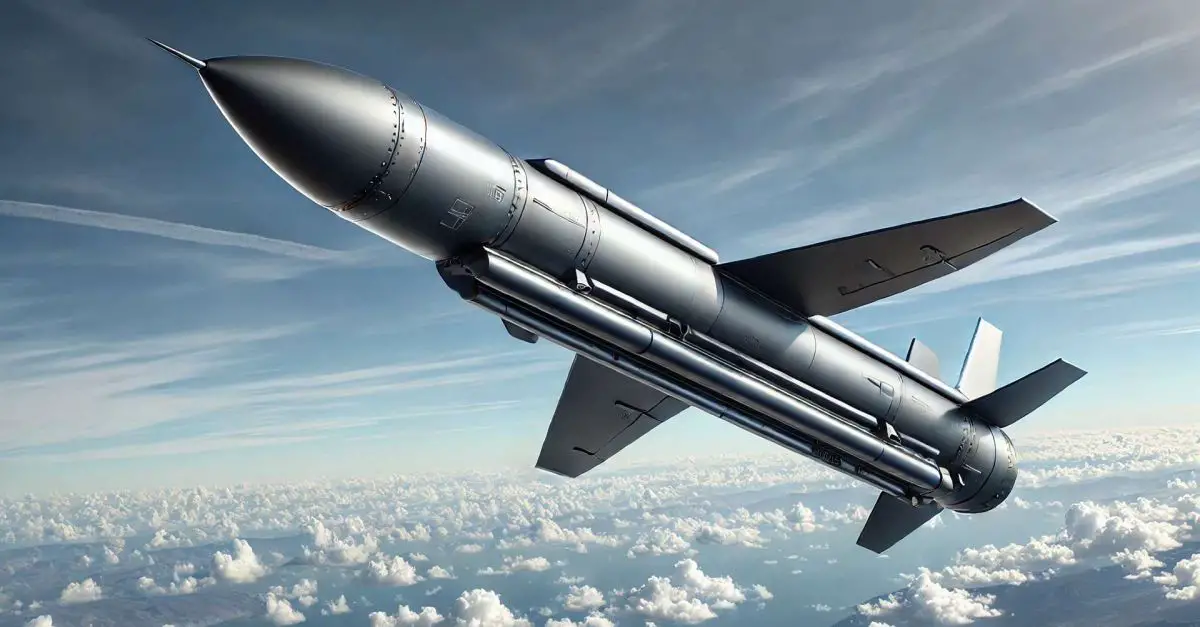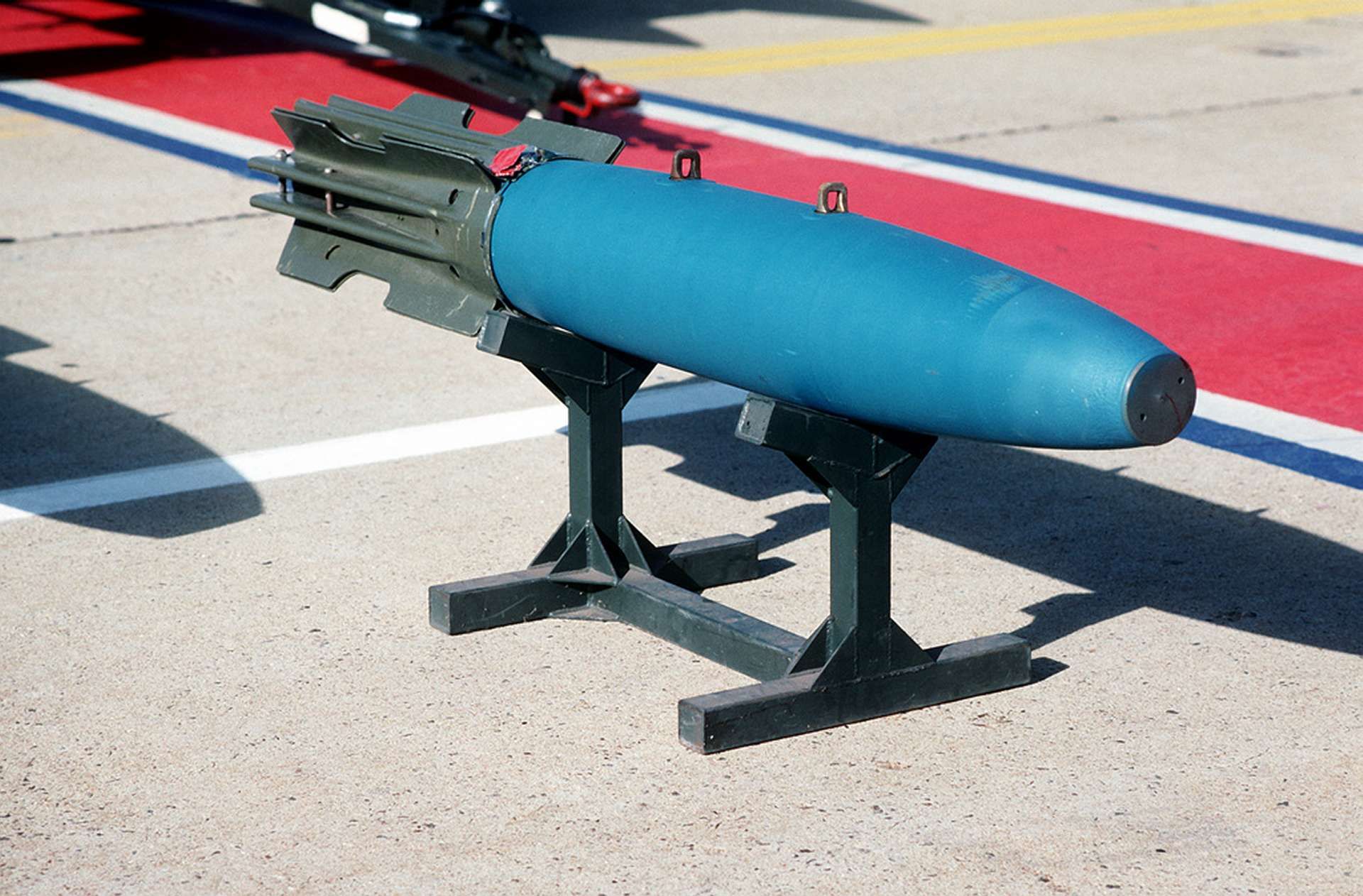Breaking News
US Air Force to develop a new ERAM missile for Ukraine with over 450 km attack range.
On July 10, 2024, the US Air Force issued a Request for Proposal (RFP) to develop a new aircraft-launched weapon called the Extended Range Attack Munition (ERAM). This project namely aims to help Ukraine meet its defense needs more efficiently and affordably. The goal is to create a prototype of an autonomous vehicle that can deliver long-range attacks. This prototype must be easy to mass-produce and meet specific capabilities outlined by the government.
Follow Army Recognition on Google News at this link

This new Extended Range Attack Munition (ERAM) will likely be a 500-pound class weapon with blast, fragmentation, and limited penetration effects; variable fuze options; a range of at least 250 nautical miles (463 km); and a speed of at least 0.6 Mach (Picture source: Army Recognition/AI-generated picture)
The RFP is sent to 16 companies that were selected from an earlier Request for Information (RFI) posted in January 2024. Only these pre-selected companies can submit proposals, which are due by July 24, 2024. The proposals must include two main parts: a Technical Volume and a Price Volume. The Technical Volume, limited to 25 pages, should cover the project's background, objectives, approach, deliverables, and needed resources. The Price Volume has no page limit for the main document but should provide a payment schedule and include all necessary data to determine a fair price. This includes commercial price catalogs, labor rates, other direct costs, and proposed travel expenses.
Proposals must be clear and detailed, providing a solid plan for meeting the government's requirements. They should not just restate the requirements but explain how they will be met. Proposals will be judged on several factors: innovative techniques, technical merit, commercialization path, execution risk, and price fairness. Technical factors will be rated as Outstanding, Good, Acceptable, or Unacceptable, while the price will be rated as Reasonable or Unreasonable.
The government may negotiate one or more project awards as standalone prototypes under Other Transaction Agreements (OTAs), but it is not required to make an award. Companies will not be reimbursed for proposal development costs if an OTA is not awarded. Government experts will review proposals, and proprietary information will be kept confidential.

While the warhead of the Mark 82 unguided bomb could be considered a baseline for the ERAM 500-pound class weapon, it will be a vendor decision and not a U.S. Government requirement. (Picture source: US DoD)
The government has asked companies to identify any production barriers and long lead materials needed for the Extended Range Attack Munition (ERAM) project. This information will help in future planning but will not affect the proposal evaluation. If the prototype OTA is successful, it may lead to follow-on production contracts without competitive bidding. Success criteria include meeting key technical goals, achieving success metrics, or delivering favorable results.
The initial RFI in January 2024 aimed to gather information from interested and capable companies that could meet the requirements for the ERAM. Companies were encouraged to submit a Statement of Capabilities (SOC) showing their relevant knowledge and experience. The SOC should demonstrate the ability to produce a 500-pound class weapon with blast, fragmentation, and limited penetration effects; variable fuze options; a range of at least 250 nautical miles (463 km); a speed of at least 0.6 Mach; a navigation system that works in GPS-degraded environments; terminal accuracy within 10 meters in both normal and high-electromagnetic interference (EMI) environments; and a production capacity of over 1,000 All-Up-Rounds (AURs) within 24 months of contract award.
The government clarified the following points in the earlier RFI about the ERAM: there is interest in weapons datalink capability and a design whitepaper for an affordable mass datalink design would be welcomed. Standard munitions storage practices apply, and multiple Bomb Rack Units (BRUs) are of interest, though specific BRUs have yet to be determined. There is no current interest in collaborative autonomy for this platform. While the Mk 82 warhead could be considered a baseline for the 500-pound class weapon, it is a vendor decision and not a U.S. Government requirement. No price target has been set for the system, and there is no corresponding Research, Development, Test, and Evaluation (RDT&E) budget line for this RFI.


























